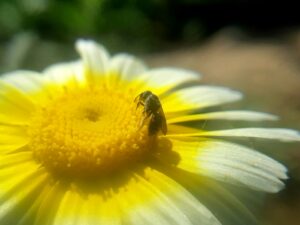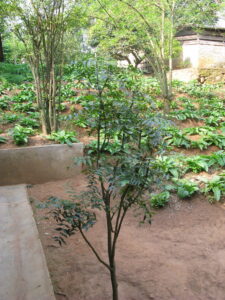So, here’s the deal – diatomaceous earth. You may have heard about it, or maybe it’s your first time hearing the name. Either way, trust us when we say that diatomaceous earth is something you need to know about. It’s a naturally occurring substance that has some pretty impressive properties. From its uses in pest control to its benefits for human health, diatomaceous earth is making waves in various industries. In this article, we’ll give you the lowdown on what diatomaceous earth is, how it works, and why it’s becoming increasingly popular. Get ready to be amazed by the wonders of this remarkable yet seemingly obscure substance.
What is Diatomaceous Earth?
Diatomaceous earth is a naturally occurring sedimentary rock composed of the fossilized remains of diatoms, a type of algae. It is highly porous and has a delicate, powdery texture. Diatomaceous earth is known for its high silica content, which gives it a range of unique properties and applications.
Definition
Diatomaceous earth, often referred to as DE, is a soft, light-colored rock primarily composed of the fossilized remains of diatoms. These microscopic aquatic plants lived millions of years ago and left behind their exoskeletons when they died. These exoskeletons accumulate over time, forming large deposits of diatomaceous earth.
Formation
The formation of diatomaceous earth begins with the growth and death of diatoms in bodies of water such as oceans, lakes, and rivers. As these diatoms die, their silica-rich exoskeletons sink to the bottom of the water body and are eventually covered by sediment. Over time, the pressure from the layers of sediment transforms the diatom remains into a solid rock known as diatomaceous earth.
Types
There are two primary types of diatomaceous earth: food-grade and industrial-grade. Food-grade diatomaceous earth is used in applications that involve direct contact with humans and animals, such as pest control and food processing. It is processed differently to remove impurities and is considered safe for consumption. On the other hand, industrial-grade diatomaceous earth is used in various industrial applications like filtration and abrasive products. It may contain higher levels of impurities and should not be ingested.
Properties of Diatomaceous Earth
Diatomaceous earth possesses various properties that contribute to its usefulness in different applications. These properties can be classified into physical, chemical, and biological categories.
Physical Properties
One of the critical physical properties of diatomaceous earth is its highly porous nature. The rock comprises tiny pore spaces, which enable it to absorb and hold moisture. Additionally, diatomaceous earth is lightweight, which makes it easy to handle and distribute. Its fine particle size and powdery texture make it practical for pest control measures and filtration purposes.
Chemical Properties
Diatomaceous earth is chemically inert and does not react with other substances. This property makes it safe to use in various applications without causing any adverse effects. Another vital chemical property of diatomaceous earth is its high silica content. Silica is an essential nutrient for multiple plants, and silica in the soil can improve plant growth and resilience.
Biological Properties
Diatomaceous earth exhibits biological properties that contribute to its effectiveness in pest control. The microscopic sharp edges of the diatom fossils in the rock can penetrate the exoskeletons of insects and other pests, causing them to dehydrate and die. This property makes diatomaceous earth a natural and effective alternative to chemical pesticides.
Common Uses of Diatomaceous Earth
Diatomaceous earth has a wide range of practical applications across different industries. Here are some of the most common uses of diatomaceous earth:
Pest Control
Diatomaceous earth is an excellent natural pest control solution. Its abrasive texture and ability to absorb oils and fats make it effective in combating various pests, including ants, bedbugs, cockroaches, and fleas. When pests come into contact with diatomaceous earth, the particles stick to their exoskeletons, dehydrating and eventually killing them.
Gardening
Diatomaceous earth can be used for multiple purposes in gardening. It can be added to the soil to improve drainage and aeration, leading to healthier root development. The high silica content of diatomaceous earth also strengthens plants and helps them resist fungal diseases and pests. Diatomaceous earth can be sprinkled around plants to create a barrier that deters crawling insects.
Water Filtration
The porous structure of diatomaceous earth makes it a highly effective filtration medium. It is widely used in water treatment facilities to remove impurities and fine particles from drinking water. The tiny pores in diatomaceous earth trap contaminants like bacteria, algae, and sediment, resulting in clean and purified water.
Cosmetics
Diatomaceous earth’s gentle and absorbent properties make it a popular cosmetic ingredient. It is often used in face masks, scrubs, and exfoliators to cleanse and revitalize the skin. Due to its mild abrasiveness, diatomaceous earth helps remove dead skin cells and impurities, leaving the skin smooth and refreshed.
Benefits of Using Diatomaceous Earth
Diatomaceous earth offers several benefits, making it a versatile and environmentally friendly choice for various applications.
Natural and Non-toxic
One of the significant advantages of diatomaceous earth is its natural and non-toxic nature. Unlike chemical pesticides and insecticides, diatomaceous earth does not introduce harmful chemicals into the environment. It is safe to use around humans, pets, and beneficial insects, making it a preferred choice for those concerned about their health and the well-being of the ecosystem.
Effective Pest Control
Diatomaceous earth is highly effective in controlling pests. Its mechanical action damages the exoskeletons of insects and pests, leading to dehydration and eventual death. This natural pest control method reduces the risk of pests developing resistance to chemical pesticides and eliminates the need for repeated applications.
Environmentally Friendly
Since diatomaceous earth is a natural substance that occurs in abundance, its extraction and production have minimal environmental impact. It is a renewable resource that can be sustainably harvested and used without depleting natural ecosystems. Using diatomaceous earth instead of synthetic chemicals and treatments helps reduce pollution and supports a greener approach to pest control and other applications.
Improves Soil Health
When added to soil, diatomaceous earth helps improve its physical properties. Its porous nature enhances soil aeration, drainage, and water retention. It also promotes the growth of beneficial microorganisms and contributes essential minerals, such as silica, to the soil. These factors improve soil health, plant growth, and crop yields.
Promotes Water Filtration
Diatomaceous earth’s exceptional filtration capabilities make it an ideal choice for water treatment. It effectively removes contaminants and impurities, helping produce clean and safe drinking water. Its use in water filtration improves water quality, reduces health risks, and ensures the removal of harmful substances, such as bacteria and microscopic particles.
How to Use Diatomaceous Earth Safely
While diatomaceous earth is generally safe, certain precautions must be taken to ensure its safe and practical application.
Protective Measures
When handling diatomaceous earth, wearing protective clothing, including gloves, goggles, and a dust mask is advisable. This protects against skin irritation, eye injuries, and respiratory issues that may arise from direct contact or inhalation of the fine powder.
Application Methods
Depending on the intended use, diatomaceous earth can be applied in various ways. For pest control, it can be sprinkled around affected areas, applied directly to insect hiding spots, or mixed with water to create a spray. It is best to mix it with soil before planting or sprinkle it around plants as a protective barrier.
Dosage Guidelines
The appropriate dosage of diatomaceous earth depends on the specific application. It is crucial to follow the instructions provided by the manufacturer or seek guidance from experienced professionals. Using excessive amounts of diatomaceous earth can be wasteful and lead to over-drying of the soil or potential damage to plants.
Precautions and Potential Risks
While diatomaceous earth is generally considered safe, certain precautions and potential risks are associated with its use.
Respiratory Concerns
The fine particles of diatomaceous earth can become airborne and pose a risk if inhaled in large quantities. Prolonged exposure to airborne diatomaceous earth dust may irritate the respiratory system and cause coughing or breathing difficulties. Minimizing dust generation during application and using caution in enclosed or poorly ventilated areas is essential.
Skin Irritation
Direct contact with diatomaceous earth may cause skin irritation in some individuals, especially those with sensitive skin. To protect against potential irritation, it is advisable to wear gloves or use appropriate protective barriers when handling diatomaceous earth. In case of skin irritation, thoroughly wash the affected area with mild soap and water.
Eye Safety
Diatomaceous earth dust can irritate the eyes if it comes into contact with them. When applying diatomaceous earth, wearing goggles or other protective eyewear is crucial to prevent eye irritation or injuries. In case of eye contact, rinse the eyes gently with clean water for several minutes and seek medical attention if irritation persists.
Ingestion Risks
While food-grade diatomaceous earth is considered safe for consumption, ingesting large amounts of any form may cause digestive discomfort or intestinal blockages. It is essential to use diatomaceous earth products as directed and avoid excessive ingestion or inhalation.
Where to Buy Diatomaceous Earth
Diatomaceous earth is readily available for purchase from various retailers. Here are some familiar places where you can find diatomaceous earth:
Online Retailers
Numerous online retailers specialize in selling diatomaceous earth products. These online platforms offer a wide range of options, including different grades and quantities, making it convenient to choose the product that suits your specific needs.
Gardening Stores
Many gardening stores and nurseries carry diatomaceous earth in their inventory. These stores often offer guidance and expert advice on using diatomaceous earth in gardening applications. Visiting a local gardening store lets you see the products firsthand and seek personalized recommendations.
Farm Supply Centers
Farm supply centers or agricultural supply stores are another reliable source for purchasing diatomaceous earth. These centers cater to farmers, ranchers, and other agricultural professionals and offer a range of products suitable for pest control, livestock health, and soil improvement.
How to Store Diatomaceous Earth
Proper storage of diatomaceous earth ensures its longevity and efficacy. Here are some guidelines for storing diatomaceous earth:
Proper Storage Conditions
Diatomaceous earth should be stored in a cool, dry place away from moisture and direct sunlight. High humidity or exposure to water can cause clumping and reduce the product’s effectiveness. Storing the diatomaceous earth in a sealed container or bag helps maintain its quality and prevent contamination.
Keeping it Dry
Diatomaceous earth must always be dry to prevent moisture absorption. Moisture can compromise its absorbent properties, making it less effective in pest control or filtration applications. Damp diatomaceous earth may also become a breeding ground for mold or bacteria.
Avoiding Contamination
To maintain the purity and efficacy of diatomaceous earth, it is crucial to avoid cross-contamination with other substances. Store diatomaceous earth separately from chemicals, pesticides, or other potential contaminants. This minimizes the risk of compromising the quality of the diatomaceous earth and ensures its safe and effective use.
Frequently Asked Questions about Diatomaceous Earth
Here are some commonly asked questions about diatomaceous earth:
Is it safe for pets?
Food-grade diatomaceous earth is generally considered safe for pets when used as directed. However, it is essential to consult with a veterinarian before using diatomaceous earth on or around pets. The dosage and application method may vary depending on the type of pet and its specific health considerations.
How long does it last?
The effectiveness of diatomaceous earth varies depending on factors such as the application, environmental conditions, and pest infestation levels. Generally, diatomaceous earth remains effective if it is dry and undisturbed. Frequent reapplication may be necessary in outdoor settings or areas with high pest activity.
Can I use it indoors?
Diatomaceous earth can be used indoors for pest control purposes. It can be applied to cracks and crevices, furniture, and other areas where pests are likely to hide. However, it is essential to use caution and minimize dust generation. Consider using a dust applicator or a wettable powder form to reduce airborne dust.
Does it expire?
Diatomaceous earth has no expiration date as long as it is appropriately stored and remains dry. However, checking the product for any signs of moisture, clumping, or degradation before use is advisable. If the diatomaceous earth has become damp or compromised, it may be less effective and should be replaced.
Can it be used in organic gardening?
Yes, organic gardening often uses diatomaceous earth as a natural pest control option. Its non-toxic nature, physical action against pests, and soil-enhancing properties make it compatible with organic gardening practices. When using diatomaceous earth in organic gardening, it is essential to choose food-grade diatomaceous earth to ensure its safety and efficacy.
Conclusion
Diatomaceous earth is a versatile and valuable natural resource with many applications and benefits. Its unique properties, from pest control to gardening and water filtration, make it a go-to solution for various industries. By understanding how to use diatomaceous earth safely and responsibly, individuals can harness its potential to improve their lives, protect the environment, and promote sustainable practices.



